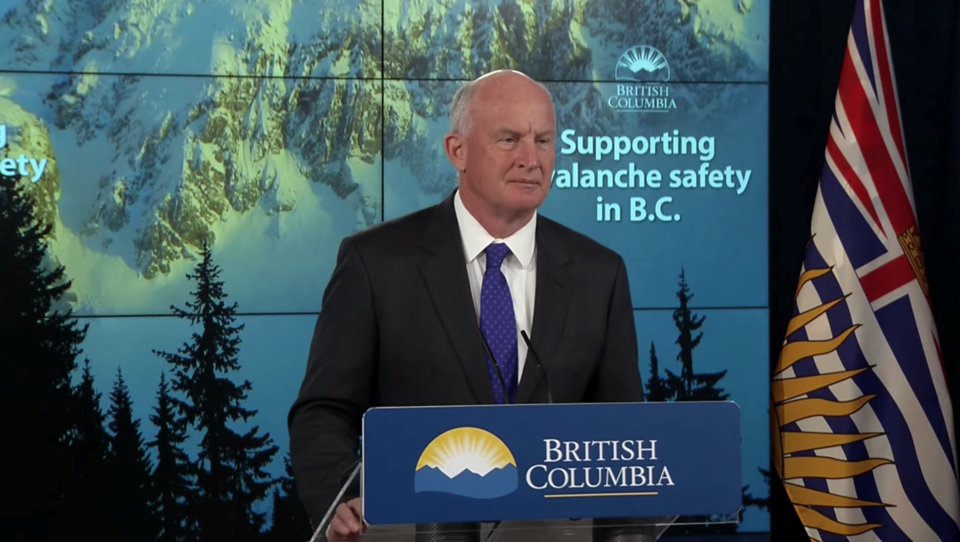Canada’s largest avalanche forecasting organization can expect some funding stability over the next decade after the B.C. government announced $10 million in grant funding spread over 10 years.
B.C.’s public safety minister Mike Farnworth announced the Avalanche Canada grant on Monday, May 17, highlighting the vital work the organization does in keeping British Columbians safe in the backcountry. “Avalanche Canada dedicates [its] work to keeping people safe from avalanche risk right across Canada, but it’s also true that about 90 per cent of Avalanche Canada’s services are delivered right here in this province,” he said. “That’s work that will help people right across B.C. and it’s work we’re proud to support.”
Avalanche Canada has been pushing for funding certainty from the province for years, said executive director Gilles Valade, and Monday’s announcement ensures the sustainability of its programming moving forward. “It was very difficult to plan when you’re six months into your fiscal year and you’re not sure how much money you’re going to get and when. This gives us a bit of predictability and sustainability in the future,” he said.
Provincial funding could vary widely year over year, with, for instance, Avalanche Canada receiving approximately $400,000 from Victoria in 2020, down from roughly $650,000 in 2019, a recent high. “When you’re moving forward and you get a quarter-million dollars less, it’s a pretty big hit on financing,” Valade said.
The grant will allow the non-profit to expand its programming, including added opportunities for youth avalanche training, and beef up regional forecasting in underserved areas, such as the Northern Rockies, where Avalanche Canada plans to add a second field team.
In the usually “data-rich area” of the Sea to Sky, without the usual number of professional forecasters in the backcountry this winter, Avalanche Canada had to increasingly rely on its Mountain Information Network (MIN), where the public can report riding conditions online in real time. Valade said reports to the MIN doubled this year, and he’s hopeful that’s one promising trend that continues after the pandemic. “I think chaos creates opportunities, and hopefully, the Mountain Information [Network] takes off even more,” he said. “It doesn’t have to be pandemic-driven, but I think that people taking part in their own safety net, participating in their own information sharing, that helps us and it helps users too because we can’t be everywhere all the time.”
Another promising side effect of the coronavirus has been an uptick in avalanche training, with Avalanche Canada seeing record numbers enrolling in its safety courses this winter.
On average, B.C. has historically been home to three-quarters of the avalanche fatalities in Canada, and last year, nine of the country’s 10 avalanche deaths occurred in the province—including a handful in the Sea to Sky. Yet, in spite of an influx of beginner and novice recreationalists into the backcountry and search-and-rescue crews across the province reporting their busiest winters on record, Valade said the data suggests the public is going to greater lengths to stay safe in the backcountry. “When you look at the usage going up and up and up every year, and this year probably exponentially, our 10-year average in fatalities is actually on the decline, so clearly some things are being done right,” he said. “I don’t think it’s all because of Avalanche Canada because we’re not out there making decisions for people, but I think people have started paying attention and they’re being careful, even though there might be a sense that some are taking more risks.”
Between March 1, 2020 and March 1, 2021, Whistler Search and Rescue (WSAR) reported a similar call volume (92) to the same period last year (88), but a whopping 38-per-cent jump in calls requiring mobilization, from 55 to 76.
The volunteer organization is now holding its first membership drive since 2014, looking to add around a dozen new members to its 31-person crew, according to general manager Brad Sills. Applications are open at whistlersar.com/join-us until June 15.



